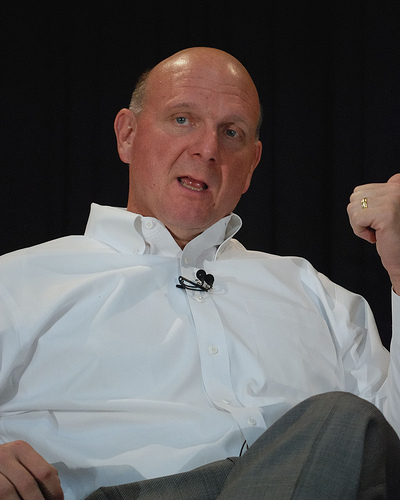Ballmer announces retirement, retirement, retirement, retirement

Microsoft CEO Steve Ballmer announced last Friday that he will retire within the next 12 months. He will remain as chief executive until a successor is chosen.
The surprise announcement came just six weeks after Ballmer outlined a major structural reorganisation of Microsoft that he said would “enable us to innovate with greater speed, efficiency and capability in a fast-changing world.”
“There is never a perfect time for this type of transition, but now is the right time,” Ballmer said last week in an internal memo to staff.
“My original thoughts on timing would have had my retirement happen in the middle of our transformation to a devices and services company … We need a CEO who will be here longer term for this new direction.”
“This is an emotional and difficult thing for me to do. I take this step in the best interests of the company I love; it is the thing outside of my family and closest friends that matters to me most.”
Microsoft’s board has appointed a committee to find a replacement for Ballmer.
The committee includes John Thompson, Bill Gates, Chuck Noski and Steve Luczo. It will work with executive recruitment firm Heidrick & Struggles International Inc and will consider both internal and external candidates.
Ballmer reportedly notified the company of his intention to retire two days before the announcement.
Thompson said the search for Ballmer’s successor had been underway for some time.
"We are well down the path in the search," Thompson said.
The announcement of Ballmer’s retirement sent Microsoft’s share price up 7%, according to Reuters.
Jump or push?
Opinion is mixed as to whether Ballmer’s retirement is voluntary or forced. Some analysts say he was “definitely pushed out by the board,” while other unnamed sources close to Microsoft are quoted as saying he “wasn’t forced out” and it was a “personal decision” of Ballmer’s.
Other commentators suggest it was somewhere in between.
“I think Ballmer didn’t make this decision alone - on his own, I don’t think he would have retired this soon. I don’t believe that he was directly told he had to retire, though. I think that he saw that he was going to be forced out, and decided to exit as gracefully as he could,” said
blogger Preston Gralla.
AllThingsD claims that Ballmer had not aimed to leave this soon.
“Sources said Ballmer’s timeline had been moved up drastically - first by him and then the nine-member board, including his longtime partner and Microsoft co-founder and chairman Bill Gates - after all agreed that it was best if he left sooner than later,” the article reads.
Making sure your conversational AI measures up
Measuring the quality of an AI bot and improving on it incrementally is key to helping businesses...
Digital experience is the new boardroom metric
Business leaders are demanding total IT-business alignment as digital experience becomes a key...
Data quality is the key to generative AI success
The success of generative AI projects is strongly dependent on the quality of the data the models...







